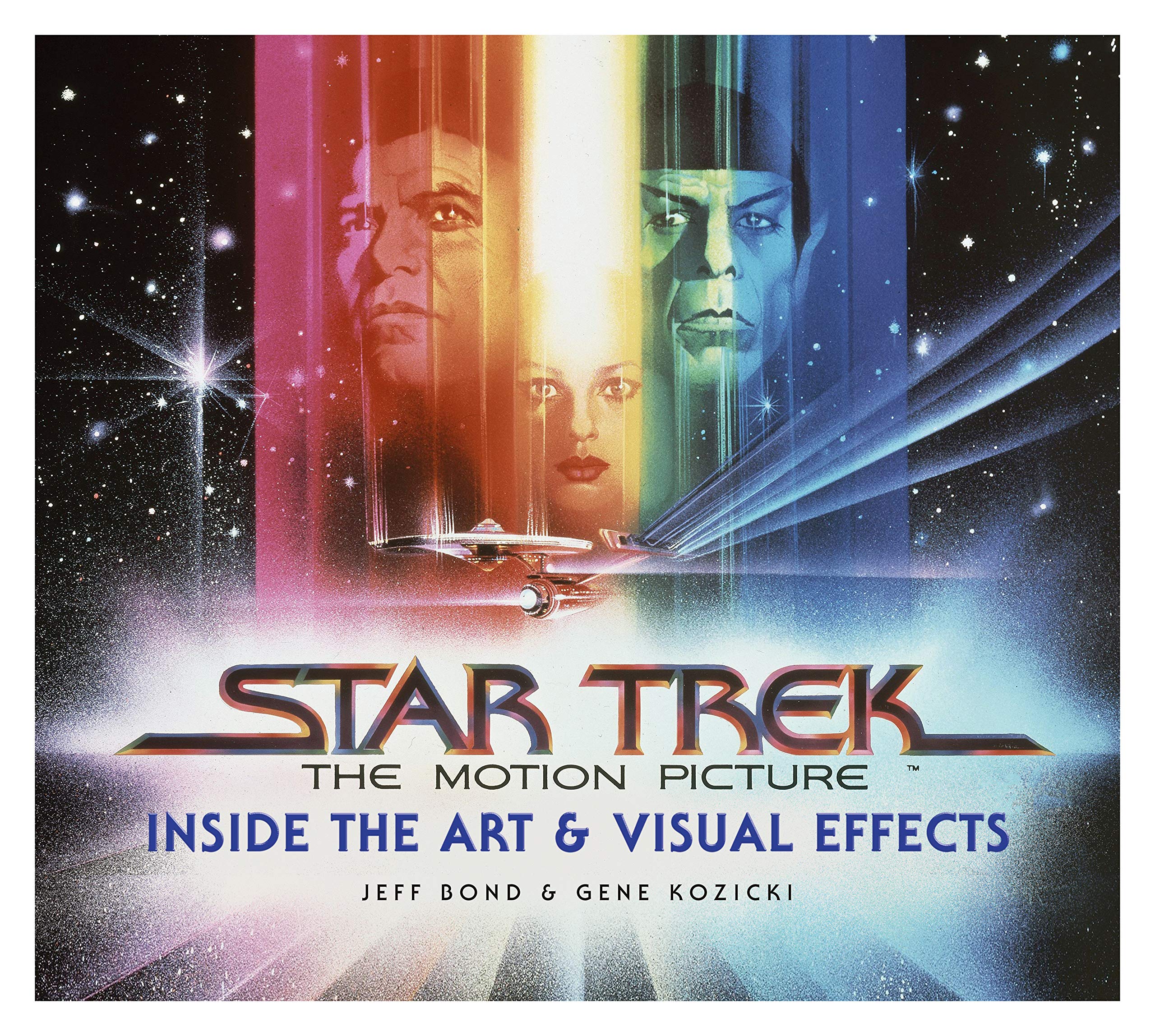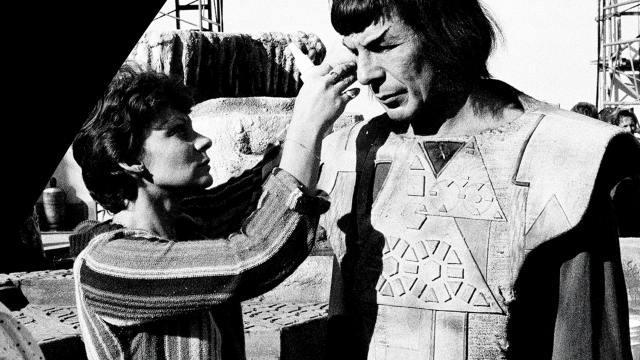Star Trek’s first foray to the box office is a strange beast — a gorgeous, haunting exploration of the franchise’s love of the cosmos wrapped up in an overwrought, over-long plot. So it’s perhaps a good thing that a new making-of book puts the spotlight on what works about Star Trek: The Motion Picture: the art behind its incredible space vistas.
Out this week from Titan Books, Star Trek: The Motion Picture — Inside the Art and Visual Effects by Jeff Bond and Gene Kozicki examines the process of bringing Star Trek to life again, this time at a brand new scope and scale as the cult classic TV show made its cinematic comeback after cancellation. Featuring concept art and matte paintings from Robert Abel, Syd Mead, Ralph McQuarrie, Andrew Probert, Ken Adams, and more, the book examines the creation of The Motion Picture’s haunting, huge, and mindbending special effects, from scale models to its trippy representation of where no man has gone before (so it’s a good job they sent a Vulcan in a spacesuit).

As well as including these artists’ iconic work, Inside the Art and Visual Effects includes brand new interviews with the surviving creatives behind The Motion Picture about what it was like to bring Star Trek to the big screen. “In addition to Gene Kozicki’s vast collection of research including photographs and artwork, his connections with visual effects professionals allowed us to conduct interviews with most of the surviving, key visual effects, concept and design artists who worked on the film,” Bond explained in a statement provided to Gizmodo over email. “We were particularly lucky to get interview time with artist Syd Mead, who designed the alien V’ger entity for the film, and is one of the greatest conceptual artists ever to work in film — Mead died of cancer a few months after we interviewed him, and long before the book was published.”
But as well as celebrating that artwork — some of which you can see below, making its debut here on Gizmodo — Kozicki hopes that exploring the creative process behind The Motion Picture will help fans realise just what a monumental process it was to bring its stunning realisation of Star Trek’s universe to the big screen. “When talking about Star Trek: The Motion Picture, I think it’s vital to place it in the proper context. Though the film was released some two and a half years after Star Wars, the decision to make The Motion Picture a big glossy feature with sophisticated (read: Star Wars-like visuals) was made only two and a half months after Star Wars was released,” Kozicki added over email. “At that point in time very few people on the face of the Earth could tell Paramount what they were in for.”
“Star Wars was almost not completed. George Lucas wound up in the hospital. No one knew how to budget, plan, and execute a film of the type Paramount was hoping Star Trek would be,” Kozicki continued. “They had to go into it blind and hope that they were making the right decisions at the time. In a sense, every one of those early films from the ‘golden age’ of visual effects is a prototype. And with prototypes, some things work and some things don’t. You have to learn from the failures as well as the successes.”
Kozicki also hopes it means fans get to see these earliest visions for The Motion Picture get the justice they deserve. “For a number of years after the release of the film, the Abel group’s participation in the film was surrounded by criticism. On one level it was somewhat justified, in the sense that they were fired, very publicly, from the film,” he explained. “But a deeper analysis of the work they did before the firing reveals that they made enormous contributions to the film. Even though they may not have executed much of the film’s visual effects, they played a large role in their design — both in the storyboarding of the film as well as the design of the ships and sets. The fact that many of those designs went on to be featured in later films is the real legacy of the Robert Abel group. We wanted, in a sense, to redeem that image and provide some context to the work done 40 years ago.”
Star Trek: The Motion Picture — Inside the Art and Visual Effects is out September 1.
